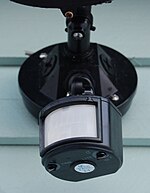Robert Walker, BSc (1st Class), MHum, York Uni, Postgrad Study at Wolfson College, Oxford
Short
summary: This is out of date research. If there is a decrease it is by a
much smaller amount, and it may be an increase. There is no effect on
the oxygen we breathe as we have enough for thousands of years. The
plankton do however seem to be decreasing somewhat in tropical regions
and increasing in polar regions, on the whole.
The
main question is about what it does to carbon sequestration as a third
of our CO2 emissions are absorbed by the sea. As of a review in 2018 it
was impossible to know if the amount of CO2 sequestered will increase or
decrease in a warming world due to the complexity of the problem.
The
original 40% decrease was really a change of colour rather than a
decrease in the numbers. In a warmer ocean then the phytoplankton need
less chlorophyll because they spend more time near the surface. That’s
because a warmer ocean has less mixing of surface layers. Taking account
of that reduces the decrease to a sixth of that figure, but then they
also were confused by natural variability.
I
looked at the latest high level review from 2018 that I could find. In
their surey of the literature they were not able to decid whether
numbers overall are increasing or decreasing. They did however find good
evidence of an increase in polar regions and a decrease in tropical
regions and some temperate regions.
If you are worried about running out of oxygen, please check my article:
IN DETAIL
Phytoplankton refer to any of the microscopic organisms that use light for photosynthesis in the sea.
To find out more: What are Phytoplankton? and Phytoplankton - Wikipedia
70 to 80% of our oxygen comes from green algae The Most Important Organism? | Ecology Global Network
- and they also play an important role sequestering carbon dioxide.
Marine sinks take up up to a third of the anthropogenic emissions,
similar in effect to terrestrial ecosystems. This is a result of the
combined effect of the solubility of CO2 in the oceans and the
biological pump which pumps the CO2 into the deap sea as the dead
plankton sink to the bottom.
See: Phytoplankton as Key Mediators of the Biological Carbon Pump: Their Responses to a Changing Climate
Incidentally,
whales also help with CO2 sequestration. When they die their bodies
fall to the bottom carrying all that carbon with them. Also
phytoplankton feed on their feces and this helps encourage phytoplankton
to grow.
The
study I’m debunking, from 2010, used chlorophyll directly to estimate
phytoplankton abundance came to the dramatic conclusion that the oceans had lost 40 per cent of their phytoplankton since the 1950s.
However
a later study found that global warming leads to less mixing of surface
layers, so that surface plankton get more sunlight and need less
chlorophyll. The 40% decrease was over estimated about six-fold.
The
warming has winners and losers, the increased CO2 as well. Higher
acidity is bad for many, but good for some types. Also, the decreased
mixing at the poles can mean phytoplankton there stay at the surface
longer in the low ight conditions.
Then
a later review in 2016 found that these studies had a question mark too
as they had been confused by natural variability of the oceans.
"Some analyses of satellite data have revealed large-scale declines in productivity from 1998 to the early 2000s (Gregg et al. 2005, Behrenfeld et al. 2006), with the proposed mechanism being increased stratification caused by climate warming. This mechanism remains under debate (Lozier et al. 2011, Behrenfeld et al. 2016). Ocean biogeochemical models indicate that the trends observed to date show decadal variability and cannot be attributed to global climate change(Henson et al. 2010). Projections of the future impacts of climate warming on ocean productivity generally suggest reduced subtropical and increased high-latitude productivity (Sarmiento et al.2004, Bopp et al. 2013)."
In that quote, Behrenfeld et al. 2016 is the New Scientist paper.
Their future projection is reduced productivity in subtropical regions, and increased levels at high latitudes.
A 2019 study using foraminifera
finds that the average community of plankton has shifted 602 km
poleward since pre-industrial times. However the amount of displacement
varies between 45 and 2,557 km depending on the amount of the sea
surface temperature change.
2018 REVIEW
There
are many other changes. A 2018 review of the literature concluded that
the strength of the biological pump is likely to change, but that it is
difficult to predict the direction of the change, whether more or less
will be sequestered as the oceans warm.
- Elevated CO2 and light levels stimulate larger organisms like diatons increasing the amount of CO2 removed by biology,
- Warmer oceans and depleted nutrients favour smaller organisms such as the cyanobacteria, decreasing the amount of CO2 removed by biology,
They concluded:
“This makes it difficult to currently predict whether the biological pump will strengthen orweaken in the next 100 years”
They
go on to say that to add to the difficulty of predicting it, then the
temperature, light, nutrient availability and the carbonate system will
vary in different regions, and may work together to create conditions
more beneficial or more hostile to phytoplankton.
This
means they have to study the effects of multiple stressors working
together. This vastly increases the complexity of the problem.
Another
issue is the timescale. Most laboratory studies look at effects of
acidification of the oceans over timescales too short for the organisms
to adapt through evolution, but they would do this rapidly in the sea
(short lives, much larger population and longer timescale).
So,
there are winners and losers. But even if we destroyed all
phytoplankton in some unimaginable eco-catastrophe we'd still be able to
breath the air due to the oxygen that is still in it, leaving centuries
for the Earth to recover and start creating oxygen again.
Even
if impossibly plant life worldwide somehow stopped producing oxygen and
the phytoplankton too, and animals continued to breathe it, we have so
much in the atmosphere, even taking account of processes that remove it,
that we would not run out of oxygen for thousands of years.
This is one of the sections of my article:
SEVEN TIPS FOR DEALING WITH DOOMSDAY FEARS
If you are scared: Seven tips for dealing with doomsday fears which also talks about health professionals and how they can help.
If in the middle of a panic attack, see
- Robert Walker's post in Debunking Doomsday
- Tips from CBT - might help some of you to deal with doomsday anxieties
- STOPP skill
USEFUL LINKS TO BOOKMARK
- Search Doomsday Debunked (Facebook)
- Search Debunking Doomsday
- List of debunks
- Search Quora for articles by 'robert walker' (insert whoever you want to search for)
- Search Sites rated Very High for Factual
- Search Doomsday Debunked Wiki
Tip, bookmark those links to search for debunks more easily. Here is a screenshot of my bookmarks
FACEBOOK SUPPORT GROUP
Facebook group Doomsday Debunked has been set up to help anyone who is scared by these fake doomsdays.
IF YOU NEED HELP
Do message me on Quora or PM me on Facebook if you need help.
There
are many others in the group who are available to support scared people
via PM and who can also debunk fake Doomsday “news” for you if you get
scared of a story and are not sure if it is true. See our debunkers list
If you are suicidal don’t forget there’s always help a phone call away with the List of suicide crisis lines - Wikipedia















